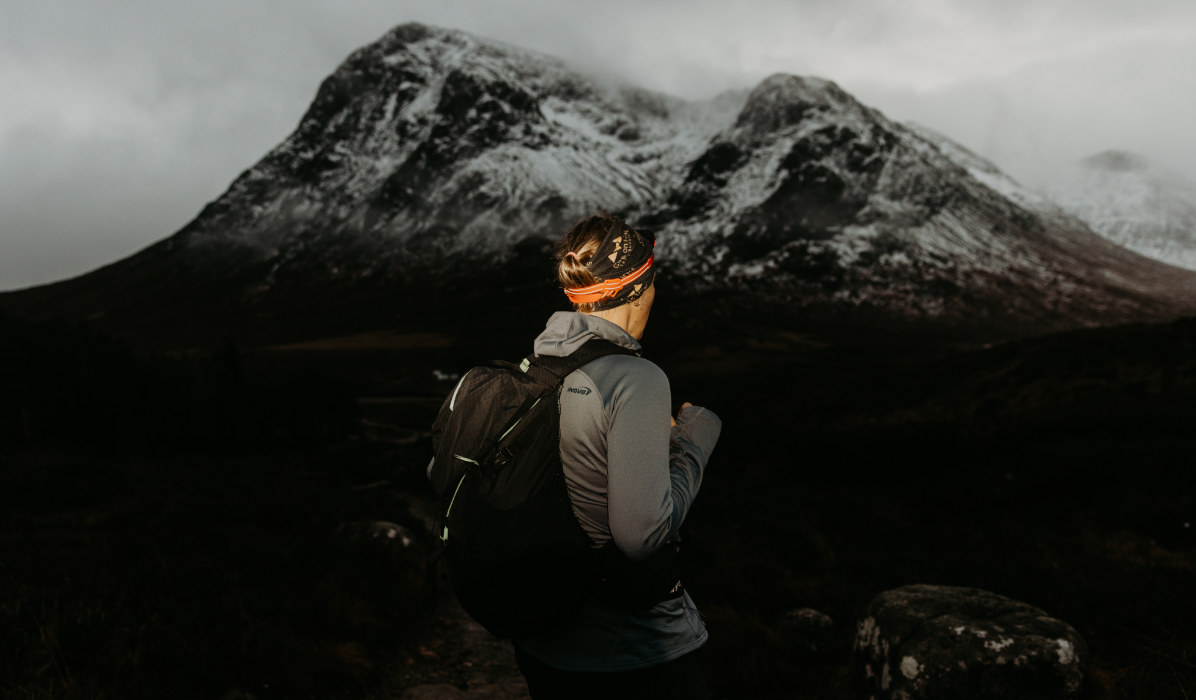
All photos by Beth Chalmers | IG: @bethchalmers__
My name is Keri Wallace, and I’m a runner, mountain leader and co-founder of Girls on Hills, as well as a running guidebook author. On December 3rd 2024, I set off on an intimidating new running challenge, one that would take me far outside of my comfort zone. The idea was to run the West Highland Way (194km and around 4000m ascent) from Milngavie, near Glasgow to Fort William in the West Highlands, solo and unsupported.
At this time of year, the challenge would involve sub-zero temperatures, icy trails and lots of darkness (17 hours of darkness to be precise!) I wanted to run solo because the route hadn't been completed in this style by a woman before, but also because it would be the best way to really challenge my lifelong fear of the dark.
As part of a wider project, Into the Dark, I carried out a survey of over 1000 trail runners, across all genders, to find out how many people experience anxiety when running at night. The results showed that women are six times more likely than men to feel afraid of the dark, and tend to modify their running behaviour accordingly in the darker, winter months. I believe this happens partly because women are repeatedly warned about the dangers of going out alone and are advised to behave (and thus feel) like prey.
Night running anxiety is a considerable barrier to many female trail runners, and one that I believe we should challenge this International Women's Day.
Q&A
1. How does it feel to have taken the first step towards making this challenge a popular choice for female runners?
When I was doing research for my guidebook, Running Challenges, I noticed that several of the UK’s most popular running routes, national trails and ultra-distance challenges don’t have a recognised Fastest Known Time (FKT) set by a woman. Sometimes there is a fairly long history of improving men’s times but no female entries at all. Even more striking is the near absence of female ‘solo unsupported’ records. This got me thinking about what might lie behind this disparity and the nature of any underlying barriers for women. By running the West Highland Way solo and in winter, I came to experience some of these barriers for myself.
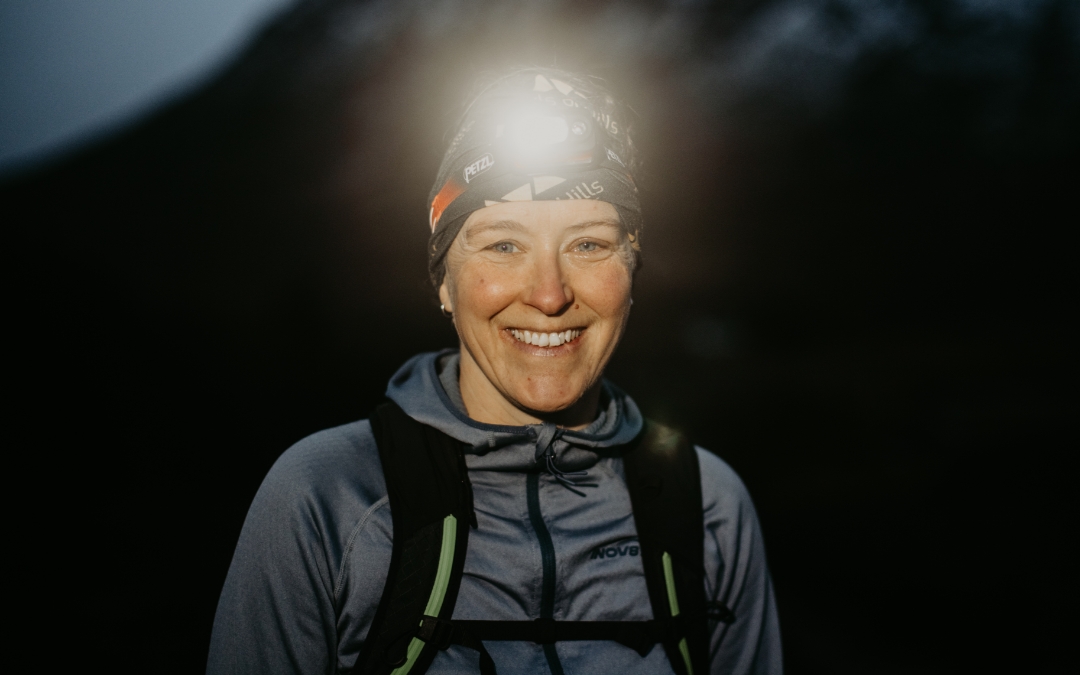

The West Highland Way is Scotland’s oldest and most popular Long-Distance Route and a designated Great Trail. Sections of its length date back as to the Jacobite Uprisings of the 1700s and around 120,000 people walk or run its length each year. I was therefore surprised that there wasn’t a recognised female ‘solo unsupported’ time for either summer or winter. It’s quite likely that there has been a female completion in this style, maybe many times, but that these runs were not recorded or widely declared - such is the nature of the Fastest ‘Known’ Time concept, which can itself be a barrier.
If there is no precedent, it can feel intimidating to put your head above the parapet and claim an FKT. But going first is to draw a line in the sand and invite other, better runners to follow. Running is a sport after all, and a competitive one at that. I want women to feel encouraged and excited to have a go at running challenges like these, not intimidated or fearful of rebuke. Setting a ‘First’ Known Time instead of a Fastest Known Time is really about representation. It allows other folk like you to think ‘if they can do that, maybe I can do it too’.
Living in Glencoe, so close to the West Highland Way, it was an obvious choice for me. But the main reason I picked it, was its remoteness. I was anxious about the long night (17 hours of darkness around Scottish mid-winter) but I liked the idea that I wouldn’t have to run solo through any urban areas at night, between the start and finish. Fear of the dark and concerns for my personal safety were the main barriers for me, followed by not having enough free time/childcare to recce the route (as a mother of two). For many women, running in the dark and on icy trails brings with it concerns about navigation and also injury, especially in remote areas where it’s unlikely anyone will discover you. Mobile signal can also be intermittent, which can be worrying.
2. As the first, how did it feel approaching this challenge without a set time pressure?
I prefer personal running challenges to races because they can be more personalised and meaningful. They can also be flexible around your life, training and the weather. Depending on your challenge, you also don’t have to be at peak fitness to have a go – especially if the journey or the experience is the main goal. It’s nice to run without time pressure, so I usually run without schedule or even a clear finishing time in mind. I always think that a true challenge is one without a known outcome – that’s part of the fun!
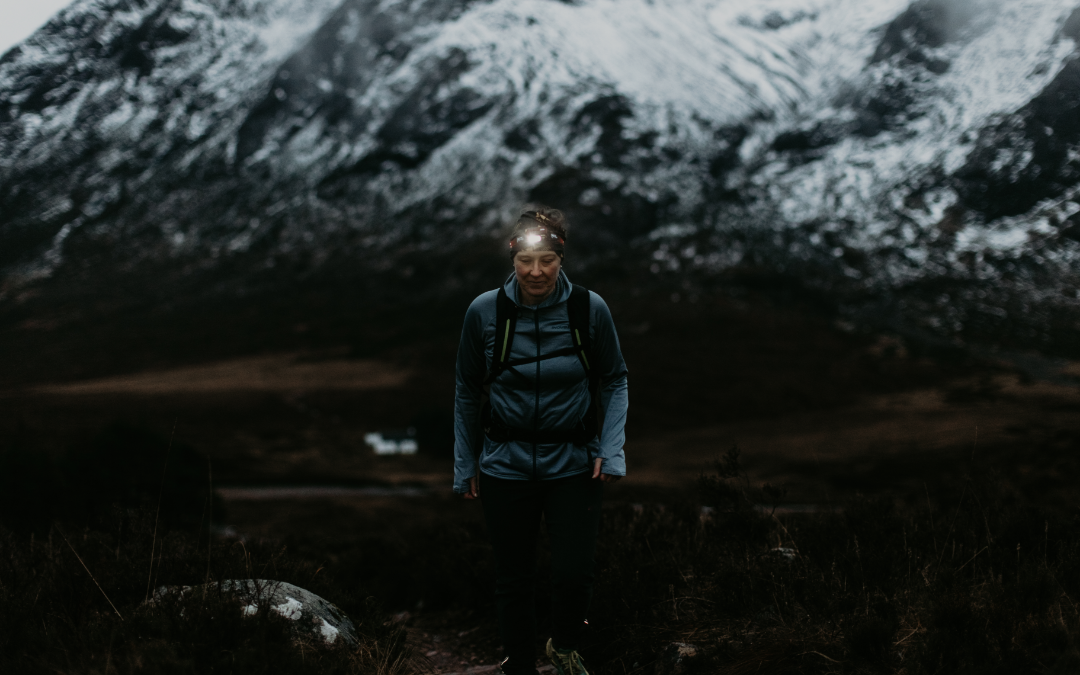

3. What’s your relationship with the dark like?
I have struggled with fear of the dark since I was a child. As soon as I’m alone in the dark, I feel super alert, like all my senses are heightened. I get intrusive thoughts about ‘the worst-case scenario’, all my worries are amplified and it’s a struggle to push-back against this negative mindset. I run mostly in quiet, rural areas but despite knowing it’s objectively very safe for me to run there at night, I often cut my run short or turn back all together. Typically, I would plan my training around the need to avoid running at night - and I wouldn’t feel at all comfortable running in a more urban/suburban area due to negative past experiences.
4. What advice would you give to someone trying to overcome that 'fight or flight' feeling when running in the dark?
I have found that knowledge is power when it comes to fear of the dark. I like to remind myself that ‘fear of the dark’ is normal (15-33% of the population) but that it is a primal survival instinct which is no longer adaptive or helpful in modern human society. It’s like a reflex that no longer serves a purpose. Thanks to mainstream safety messaging aimed at women, it’s not uncommon to think that it’s unsafe for women to go out alone at night, that our fear is rational, proportional and justified. In reality, the opposite is true – especially in remote rural areas where the likelihood of even seeing another person is low, let alone experiencing some kind of deliberate harassment or opportunistic assault.
The first step is to question your fear. Ask yourself ‘what is the real risk here’ and decide whether your fear is helping or hindering you. If your run is objectively safe, the next step is to desensitise yourself to night running. Start small and build-up slowly. Get a reliable, bright headtorch, and carry a spare. Racing through the night or running with a group or club is a great way to normalise the experience and build confidence in your footwork.
Distraction is my go-to tool (I like to run with headphones to block-out creepy noises) but others prefer mindfulness techniques to manage feelings of anxiety. Bone-conducting headphones, which help preserve awareness can be helpful, as can carrying a first-aid kit, GPS and plenty of warm clothing in case of emergency. Being prepared can help fend-off the ‘what if’ moments!
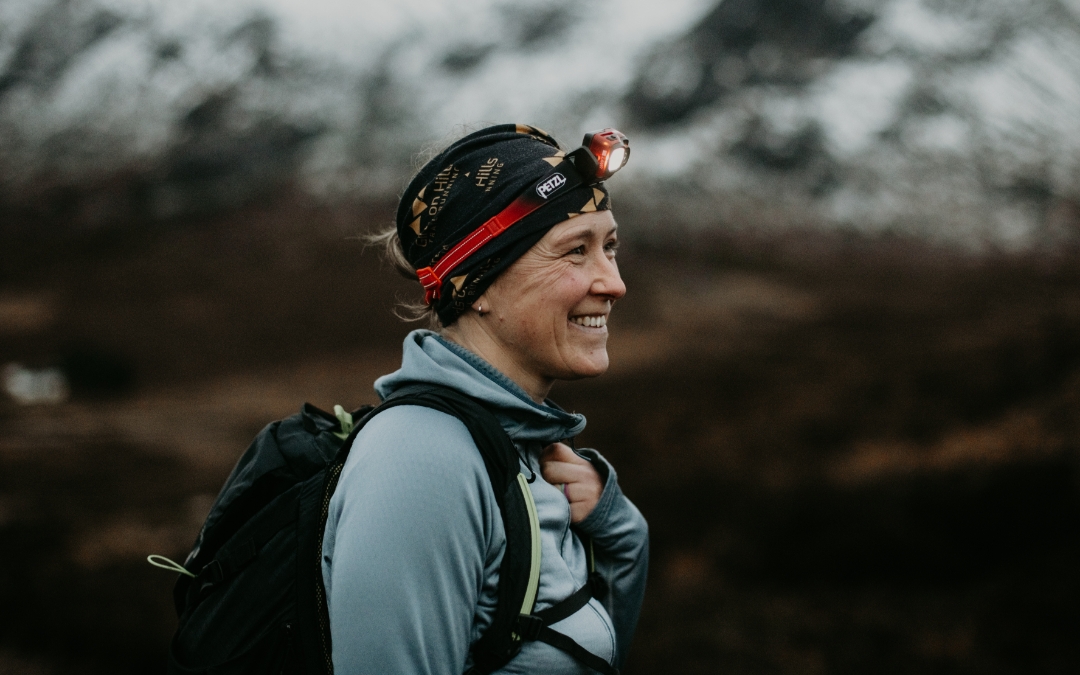

5. How do you begin to prepare for such a challenge?
I like to do a bit of virtual legwork first! I enjoy researching the challenge and thinking through the logistics. I would then decide roughly what date I’d like to do the challenge and work back from there in terms of training. As a running guide, I know what kit and footwear work for me but there are always new products to try and small improvements to be made. I would tend to try out food, vests, new socks or shoes etc in training, so that when it comes to the big day I know how these items will perform. The more time and effort you invest in the preparation for a running challenge, the more rewarding it tends to be.
6. As you discuss in your film 'Prey', the onus is often put upon women to change their behaviours and prepare for the worst. Do you have any advice for men of ways they can help shape running to feel more accessible and safer for women*?
This is a really thorny issue. When you consider that 60% of female runners have experienced harassment and 25% sexual abuse**, it’s not hard to understand why a woman, running alone (especially at night) might feel anxious of an approaching man/men. It’s not that all men are dangerous of course, but it only takes one bad egg. With this in mind, I think it’s reasonable to ask that men give women plenty of space and avoid catching them by surprise or following (or appearing to follow, by foot or by car).
On the flip side, men are women’s best allies; uniquely positioned to step-in and offer help, call-out sexist remarks, challenge stereotypes and dismantle toxic norms such as catcalling and sexualising female runners. It really helps when men make an effort to understand and validate why women might feel afraid in these circumstances, rather than misinterpreting such reactions as being in some way ‘anti-men’.
*The term woman is used here to include anyone who identifies as a woman.
Transgender and nonbinary individuals experience high rates of harassment and physical/sexual assault. For example, Office for National Statistics data shows that trans people are twice as likely as cisgender people to be victims of this kind of crime (in a non-running context).
** In 2021, a Runners’ World survey (n=2,000 women) revealed that 60% of female runners had experienced harassment and 25% regularly experienced sexual abuse. Re road/urban running, not trail running
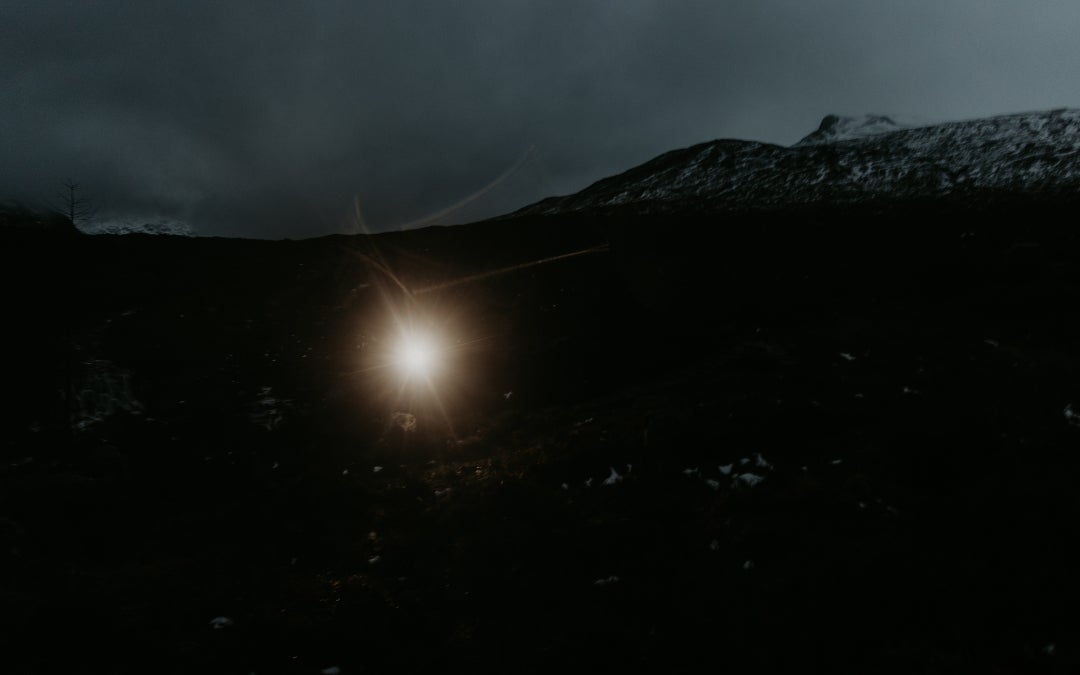

7. Have you got any other 'first-known-time' challenges lined up?
Ooooh I couldn’t possibly tell you THAT!!! Actually, I do have a notion to run a solo unsupported Ramsay Round in memory of the late Charlie Ramsay. I’m not aiming for sub-24h time, just a brilliant adventure on a perfect weather day.
‘Ramsay’s Round’ as he liked to call it, was part of my first solo running challenge back in 2011, at which time there was no official map of the round. I contacted Charlie to let him know, and he promptly put that right! Today I’m honoured to have one of my photos on the front of that map, and to have gotten to know Charlie better over the years since I first set foot on the round. Charlie recognised the gender gap in Ramsay Round completions and was always encouraging more female attempts. He would also enthuse at length about the wonderful hills on the round and the incredible experience of completing it, whether it took you hours or days. I think he’d be pleased if I finally took his advice and got on with it!
8. How can we follow your future endeavours?
You can find out what I’m up to by following Girls on Hills on Instagram (@girlsonhillsuk) or by signing up to our newsletter (at the bottom of our homepage) at www.girlsonhills.com
You can hear more about the Into the Dark project, supported by INOV8 and Petzl at the Keswick Mountain Festival in May (I’m speaking on Sunday May 18th).
For further advice and resources see www.girlsonhills.com/into-the-dark
Want to run the West Highland Way on your own terms? Girls on Hills is guiding a two-day fastpacking adventure for women on April 5th & 6th; West Highland (My) Way.
